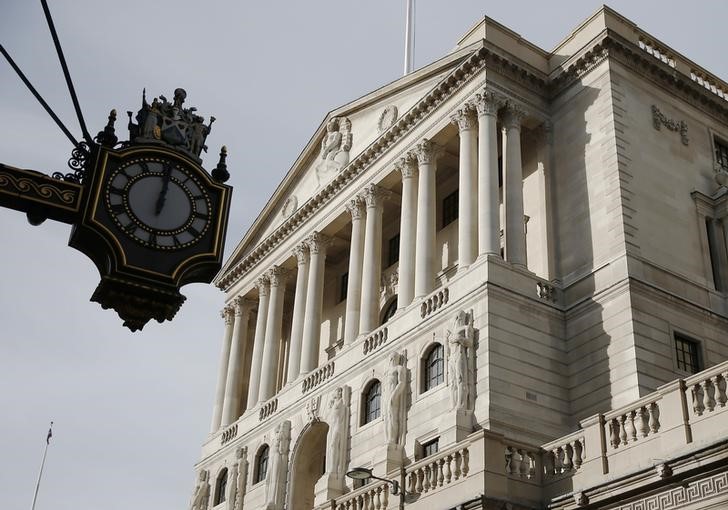By Geoffrey Smith
Investing.com -- The pound tumbled and volatility returned to the U.K. government bond market on Thursday after the Bank of England signaled it can't afford to raise interest rates much further without killing the economy.
As expected, the Bank raised its key rate by 75 basis points, the biggest hike in nearly 30 years, to 3.0% - the highest it has been since 2008.
However, markets sold off with increasing force as Governor Andrew Bailey and his colleagues signaled that - even with inflation running at over 10% - they didn't think interest rates needed to rise much further.
The pound fell 1.7% to below $1.12 before recouping some of its losses to stand at $1.1199 by 11:45 ET (15:45 GMT). It also lost 1.1% against the euro to trade at 1.1467.
But the biggest move came in the Gilt market, shattering a fragile peace that had reigned since new Prime Minister Rishi Sunak and Chancellor of the Exchequer Jeremy Hunt had binned the reckless unfunded tax cuts of their predecessors, Liz Truss and Kwasi Kwarteng. The yield on the benchmark 10-year rose 10 basis points to 3.51% and the 30-year yield rose 15 basis points to 3.72%. The moves "suggest this is restoring the U.K. risk premium to its Truss levels," said Marc Ostwald, strategist with ADM ISI in London, in a note to clients.
In truth, the Bank had a near-impossible job of communicating its decisions convincingly. By an accident of timing, it had been forced to compile its new forecasts for the next two years at a time when markets were wildly distorted by the - as it turned out, temporary - chaos in the Gilt market caused by the Truss-Kwarteng plans. In extrapolating those conditions for two years, the Bank's forecast model generated an apocalyptic scenario of 18 more months of recession, with interest rates as high as 5.25% squeezing the life out of the British economy and putting it back on the edge of deflation.
"We don't have a precise alternative path," Bailey apologetically told journalists at his regular press conference.
"We think it’s likely that further rate rises will be necessary...but we also think we’re not likely to have to go as high as 5 1/4%," his colleague Ben Broadbent added. "What actually happens will depend on the shocks that actually hit the economy."
From the markets' point of view, the chief takeaway was that the Bank's messaging was considerably more dovish than that of Federal Reserve Chairman Jerome Powell on Wednesday, who warned that U.S. rates would have to rise higher than the market thought in order to tame inflation, even though it may slow the pace of policy tightening from now on. The fact that the U.K. faces a very different set of circumstances - summed up by Bailey as a bigger negative shock than anything experienced in the 1970s - was ignored.
While many U.S. indicators - especially from the labor market - are still pointing to robust growth, the U.K. is already sliding into recession, as a surge in fuel prices stemming from Russia's war in Ukraine steadily seeps through the economy. S&P's composite purchasing managers index for the U.K. economy, a rough proxy for real-time momentum, fell to 48.2 in October, clearly below the 50 level that typically separates growth from contraction.
The latest rate hike is likely to deepen that slide raising businesses' borrowing costs and draining disposable income away from mortgage holders, a fact acknowledged by Jeremy Hunt to reporters later.
Hunt is due to present a comprehensively revamped budget in only two weeks' time, something that will at least remove some of the uncertainty about the outlook the next time the Bank meets to set interest rates in December.
ADM's Ostwald was doubtful that Hunt will be able to meet his target of presenting a budget that will bring public debt down in the medium term, something that various reports have suggested will require 40 billion pounds of tax increases and spending cuts.
"Will the backbenchers vote for that level of austerity with an election just two years away?" Ostwald argued.
